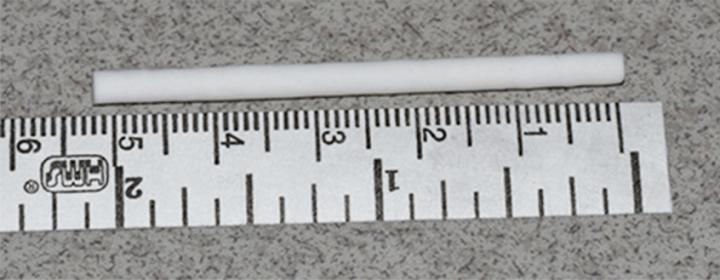
Credit: [Credit: N.B. Fadia et al., Science Translational Medicine (2019)]
A team of scientists has created a biodegradable, synthetic conduit that repairs large gaps in injured nerves, which supported recovery and accelerated neuronal healing in a macaque model. The synthetic nerve conduits could offer a viable alternative to autografts – the current gold standard treatment – for supporting the regeneration of nerves in patients who have experienced trauma and severe injuries. Traumas or surgical procedures can damage the body’s peripheral nerves, resulting in gaps between the nerves that impair movement and daily life. Peripheral nerves do have the ability to slowly regenerate across small gaps with some assistance, but larger gaps from more severe injuries are more challenging to heal. Clinicians treat large nerve gaps by transplanting nerve tissue from elsewhere in the body – called an autograft – but this approach doesn’t work for all types of injuries and can cause pain or a loss of sensation. Building on previous work in rats, Neil Fadia and colleagues tested a synthetic conduit that can bridge large nerve gaps by guiding the regrowth of neurons. Their device is a small, tube-shaped object made of a biodegradable polyester with microspheres that release GDNF – a protein that supports the survival of neurons – embedded in the wall of the tube. When implanted into macaques with large nerve defects in their arms, the nerve guide boosted nerve regeneration and the nerves’ ability to conduct signals over the course of a year. The animals that received the conduits recovered their motor skills as well as those treated with autografts and showed superior recruitment of cells that sheathe neurons in myelin, an important protein that insulates nerves.
###
Media Contact
Science Press Package Team
[email protected]
202-326-6440
Related Journal Article
http://dx.




